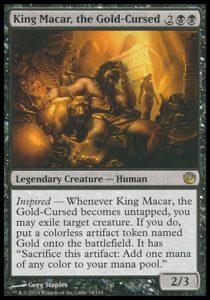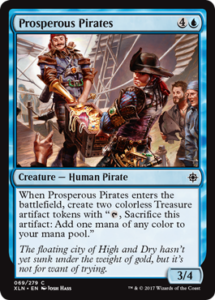Today was a doozy of announcements. Wizards officially acknowledged the theft and release of an uncut Ixalan sheet. Apparently, the leak was early enough that they were able to redo their spoiler season, so it’s not as bad as the New Phyrexia spoiler. They spoiled not only those leaked cards, but more, as well as the new set mechanics. Planeswalkers are now legendary—meaning you can play multiple different versions of Jace or Nissa alongside each other. (They’re still not legal Commanders, since they’re not creatures.) And finally, Mark Rosewater published his annual State of Design column and acknowledged that the past year was a rollercoaster.
Let’s look at the officially spoiled mechanics for Ixalan and consider whether they fall victim to one of the biggest design problems of the last two years: complexity creep.
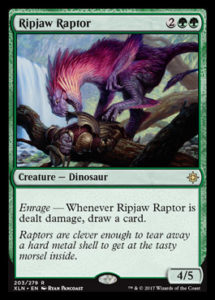
Enrage
The dinosaur mechanic is an ability word, which means it works differently on each card. The word Enrage on cards signifies the general function of the ability, but each card sets its own rules for what happens when a creatures become enraged. The mechanic is tied together by a simple rule: hurt a dinosaur, and something bad happens.
Gameplay-wise, Enrage adds a little bit of complexity to attacking and blocking—you need to account for its effects when declaring attackers/blockers and know how it works with multiple blockers (it only triggers once per combat damage step). Also, if it’s primarily on larger creatures (which I’d expect dinosaurs to be) and probably only triggers once or twice per creature per game, it may take a while for folks to familiarize themselves with all the different enrage triggers. My gut says that this is a medium complexity mechanic that’s easy to grok.
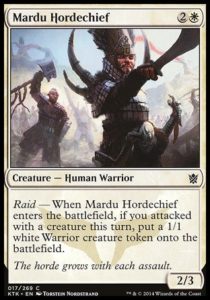
Raid
The great Mardu mechanic has returned, and that’s hardly surprising. It’s simple, it’s flavorful, and in every extant instance, it does nothing the turns after it’s played. I’m delighted to see it return and in a new color. Raid is a less complex mechanic and shouldn’t be problematic for play.
Treasure
Gold and Etherium Cells are back as treasure, and I’d bet good money that there are lots of “treasure matters” cards. This is the other pirate mechanic, and while it’s not complicated, it adds a noncreature token to the battlefield (which complicates things when there are creature tokens) and splits pirates’ focus across two mechanics. I’d be more skeptical of treasure as a major mechanic, except Investigate worked so well in Shadows Over Innistrad. This is a second mechanic to complicate the board state (alongside Enrage), but it has a simple and consistent effect.
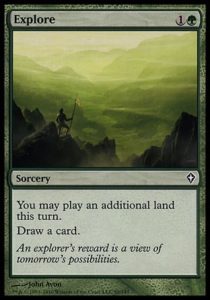
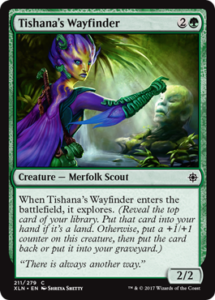
Explore
Explore is a creature mechanic which works the same way every time, but has a lot of little knobs. If you find a land, you draw a card. If you don’t, you get a +1+1 counter and psuedo-scry. This is a smoothing mechanic, which tends to be excellent for Limited and rewards skillful play. Moreover, by taking away the ability to scry away land, it smartly negates the possibility of people shooting themselves in the foot. Explore, like Raid, is only relevant the turn it happens, so it adds little to battlefield complexity.
Explore is another straightforward mechanic, which is good, but we’re not done with mechanics yet. One of the big problems with Amonkhet was its sheer number of mechanics. Setting aside the complexity of Embalm and Externalize, there was a lot of new mechanics to learn and stuff to keep track of, and that was problematic. Ixalan’s new mechanics revealed so far are very flavorful, which makes them easier to grok, but they’re getting up there in the numbers department, and we’re not stopping yet.
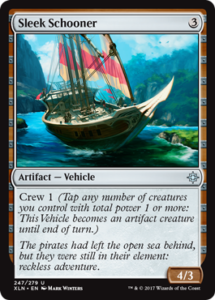
Vehicles
They’re back. I wasn’t a fan of them on Kaladesh—they encourage bad deckbuilding habits with insufficient creatures—but a lot of their problems were developmental (see Untethered Express and Renegade Freighter, to say nothing of Smuggler’s Copter). That said, if Wizards was going to bring back the Crew mechanic, Pirate World is definitely the place to do it.
Vehicles are a medium complexity mechanic which complicate the board state. They play into similar brain space as Enrage, where you need to plan an extra step when considering combat math. By itself, that’s not onerous, but once you start factoring in those two mechanics and the possibility of Raid, suddenly there’s an appreciably heavier cognitive load than one is accustomed to.
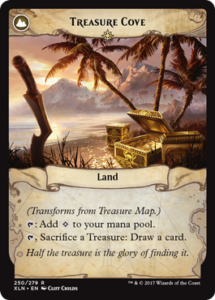
Transform
This gorgeous piece of art isn’t a masterpiece, it’s the backside of a treasure map. As ever, transform allows massive flavor wins, but at the cost of a complexity, tournament demands, and higher printing costs. The mechanic is simple enough to grok and can convey amazing flavor, but requires players to have sleeves or checklist cards, as well as hides rules text so that players can’t see both sides of each card at the same time. Transform is one of my favorite Magic mechanics, but its addition to the set adds a lot of complexity.
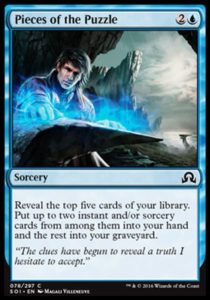
Putting it all together
Ixalan has six mechanics (plus the unnamed mechanics every set has—in this case, the Merfolk and Vampire mechanics that care about counters and life). Raid, Transform, and Vehicles are returning mechanics (though one could argue that Treasure is a returning mechanic, albeit one that was never a focus). Most of the complexity is in the familiar mechanics, but that doesn’t help newer players, and six mechanics is a nontrivial amount.
Some of these mechanics play in the same head space (Raid, Enrage, and Vehicles all make combat a bit more complicated to parse and plan for). Additional, these mechanics don’t seem to be evenly distributed among factions—Dinosaurs have one clear mechanic, but Pirates might have as many as three (Treasure and Raid for sure, but Vehicles also make sense as Pirate-centric). For enfranchised players, these mechanics might be insufficiently exciting—Transform, Vehicles, and Etherium Cells are currently Standard legal, Raid only rotated out last year, and Enrage and Explore are cool, but not dramatic effects.
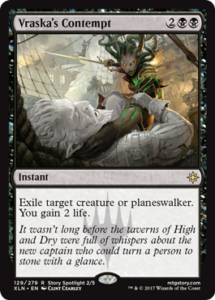
In summation, I’m a tiny bit worried about the mechanics in Ixalan. There are a lot of them. They have a lot of great flavor, but they’re straddling between being tied to factions and the world as a whole. Many of them are simple, but when combined might be more brain-taxing than the sum of their parts (and not in a good way).
That said, I’m supremely excited to hop on board a pirate ship and raid the dinosaur coasts for treasure. I deeply admire the transparency of WotC’s article on the stolen intellectual property and acknowledging that people have seen these cards. I’m very much looking forward to playing with these new cards, since there’s no substitute for actual playtesting. I’ll be keeping an eye out for how easy it is to track board states and remembering what cards do what, but then again, that’s what we’re always doing, isn’t it?
And, as always, thanks for reading.
—Zachary Barash
Zachary Barash is a New York City-based game designer. He works for Kingdom Death: Monster, has an MFA in Game Design from NYU, and does freelance game design.
His favorite card of the month is Unconventional Tactics. It’s rare to see humor like this in a card not featuring goblins, but it manages to succeed on several levels. Unconventional Tactics manages to tell a silly, dark, and sad tale of mindless zombies who really want to serve jumping off a ramp. It’s a light, subtle, and poignant moment amid the dark background of Hour of Devastation. On the design side, it manages to revamp Angelic Blessing—by giving it a tiny tribal theme, it suddenly becomes a weird card advantage/aggro engine. And it does all of that without you even needing to notice.


